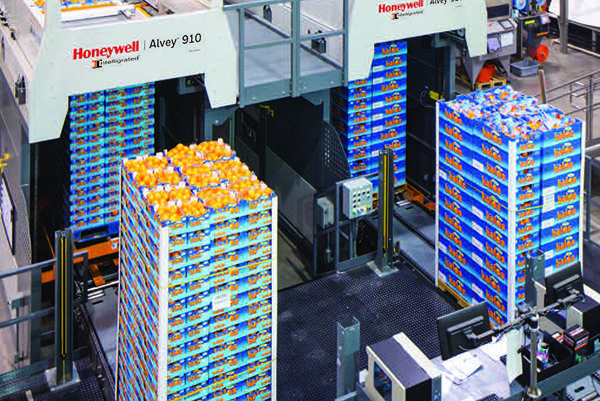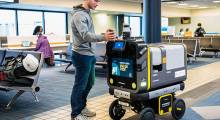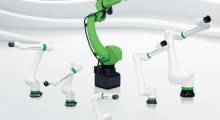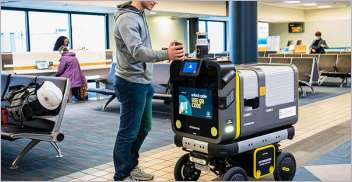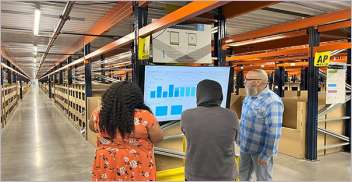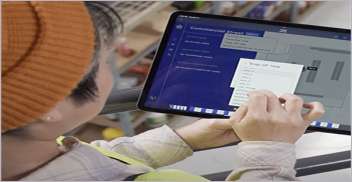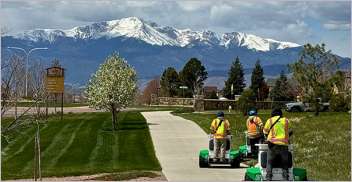With increasing e-commerce demand and labor shortages, warehouse operators are demanding robotics and automation, according to Honeywell International Inc. The company last week announced expanded capabilities to help companies achieve automation interoperability in the distribution center, or DC.
“Forward-thinking companies are investing in robotics and automation in the distribution center to accommodate growing order volumes, fill critical skilled labor gaps, take over repetitive and dangerous tasks, and help alleviate profitability and inflationary pressures,” said Keith Fisher, president of Honeywell Intelligrated.
“In order to fully reap the benefits of these investments and power a true smart warehouse model, each piece of the automation puzzle must work seamlessly together with little human intervention required,” he stated. “These automated solutions need a central system that acts as the 'brain' to connect disparate systems and warehouse execution and performance management software, and Honeywell is ready to help companies close the interoperability gap.”
Charlotte, N.C.-based Honeywell said it delivers aerospace products and services, control technologies for buildings and industry, and performance materials globally. “Our technologies help aircraft, buildings, manufacturing plants, supply chains, and workers become more connected to make our world smarter, safer, and more sustainable,” it said.
Honeywell integrates automation
As companies rush to implement automation, they often end up with disparate systems and machines that don’t work together and communicate effectively, said Honeywell. The company claimed that its software and systems can enable the seamless exchange of data for better-informed decision making, maximum efficiency, and improved automation return on investment (ROI).
It added that integrating automated systems today is “the foundation for scalable, technology-forward dark warehouses of the future.”
The global market for warehouse automation technology is anticipated to reach $21.7 billion this year, according to Makreo Research. Honeywell said it has expanded the integration of its technologies to meet the growing need for long-term compatibility of these investments.
The Honeywell Universal Robotics Controller (HURC) acts as a digital backbone in DCs to tightly integrate robotics with software and unify control. The central system allows robots to learn from each other, enabling faster implementation, meaningful performance improvements and significant scale of automation.
Honeywell’s Momentum Warehouse Execution System utilizes machine-learning algorithms and data-driven optimization techniques to orchestrate disparate automation systems and empower DCs with dynamic decision-making intelligence.
Honeywell Forge Connected Warehouse offers an end-to-end view of business operations, helping with data analysis and reporting and enabling businesses to identify trends, optimize inventory levels and measure asset health and reduce waste.
Warehouse labor shortages a major driver
In addition to helping warehouse operators address the automation interoperability gap, Honeywell said it also helping them alleviate labor challenges with automation solutions. The global labor force will face a shortage of 85 million workers by 2030 because of aging populations, changing demographics, and skills gaps, found McKinsey & Co.
At ProMat 2023, Honeywell has demonstrated several technologies that are being deployed in warehouses and distribution centers to help operators increase efficiency and productivity with reduced labor. The automation technologies on display include:
- Smart Flexible Depalletizer: Capable of processing single- and mixed-SKU pallets in any pattern or sequence — without human supervision – this offering is designed to allow customers to consistently remove up to 600 packages an hour from a pallet and place on conveyor belt or other equipment for further handling. This represents a 30% increase in efficiency from a manual operation, said Honeywell.
- Automated storage and retrieval system (ASRS): The ASRS uses artificial intelligence and machine learning to help warehouses receive, process, and fill orders faster and at up to 99.9% accuracy while reducing storage footprint. Honeywell said its new system helps efficiently manage more than 20,000 SKUs using high-speed shuttles, reducing labor and increasing space.
Honeywell claimed that it offers one of the broadest portfolios of advanced automation and software in the industry, including the latest warehouse robotics and hybrid solutions that combine the strength of multiple technologies. The company is demonstrating its systems at Booth S618 at ProMat in Chicago.
Editor's note: For more about ProMat 2023, visit Robotics 24/7's special coverage page.
Article topics
Email Sign Up

